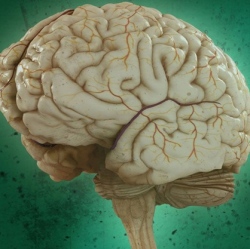
In an experiment to study how neurons form networks and compute, Thomas DeMarse, a University of Florida professor of biomedical engineering, says his lab-grown rat “brain” in a dish can fly a simulated F-22 fighter jet via an array of electrodes. DeMarse grew the 25,000-neuron “brain” in a glass dish.
The cells, cortical neurons cultured from a rat brain, sit atop a 60-electrode grid connected to a desktop computer. The neurons then form a two-way connection with the simulator software, much like how our brain gets input from the senses and in return instructs the body how to act. The simulator sends the neurons information about flight conditions, the plane’s attitude, for example, and the neurons return signals to the plane’s controls to alter its path. The process is repeated in a feedback loop, controlling the plane’s flight.
DeMarse’s experiment delivers an otherwise elusive live glimpse of neurons in action, it’s difficult to observe brains on the cellular level in living animals. “You see one extend a process, pull it back, extend it out, and it may do that a couple of times, just sampling who’s next to it, until over time the connectivity starts to establish itself,” DeMarse said. “[The brain is] getting its network to the point where it’s a live computation device.”
